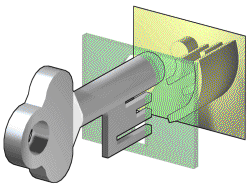Tony More - Lock Picking Made Easy (Locksmith Instruction Book 1)
Here you can read online Tony More - Lock Picking Made Easy (Locksmith Instruction Book 1) full text of the book (entire story) in english for free. Download pdf and epub, get meaning, cover and reviews about this ebook. year: 2012, publisher: Amazon Kindle, genre: Romance novel. Description of the work, (preface) as well as reviews are available. Best literature library LitArk.com created for fans of good reading and offers a wide selection of genres:
Romance novel
Science fiction
Adventure
Detective
Science
History
Home and family
Prose
Art
Politics
Computer
Non-fiction
Religion
Business
Children
Humor
Choose a favorite category and find really read worthwhile books. Enjoy immersion in the world of imagination, feel the emotions of the characters or learn something new for yourself, make an fascinating discovery.

- Book:Lock Picking Made Easy (Locksmith Instruction Book 1)
- Author:
- Publisher:Amazon Kindle
- Genre:
- Year:2012
- Rating:5 / 5
- Favourites:Add to favourites
- Your mark:
Lock Picking Made Easy (Locksmith Instruction Book 1): summary, description and annotation
We offer to read an annotation, description, summary or preface (depends on what the author of the book "Lock Picking Made Easy (Locksmith Instruction Book 1)" wrote himself). If you haven't found the necessary information about the book — write in the comments, we will try to find it.
This fully illustrated book will teach you all about picking locks, residential, commercial and automotive, you will never be locked out again and you may even make some money helping others when they lock themselves out of their home or vehicle.
Tony More: author's other books
Who wrote Lock Picking Made Easy (Locksmith Instruction Book 1)? Find out the surname, the name of the author of the book and a list of all author's works by series.




 Palace of Sargon II, Khorsabad, PersiaIn appearance and operation this lock was similar to this wooden cane- tumble lock.
Palace of Sargon II, Khorsabad, PersiaIn appearance and operation this lock was similar to this wooden cane- tumble lock. 
 Ancient Warded Locks
Ancient Warded Locks 
 Modern Warded Lock
Modern Warded Lock 

